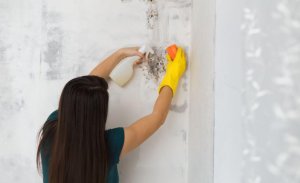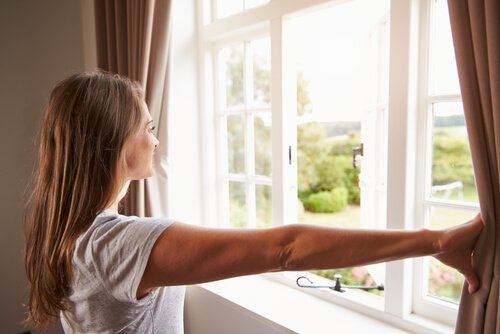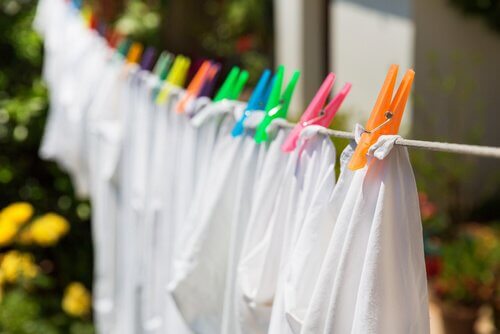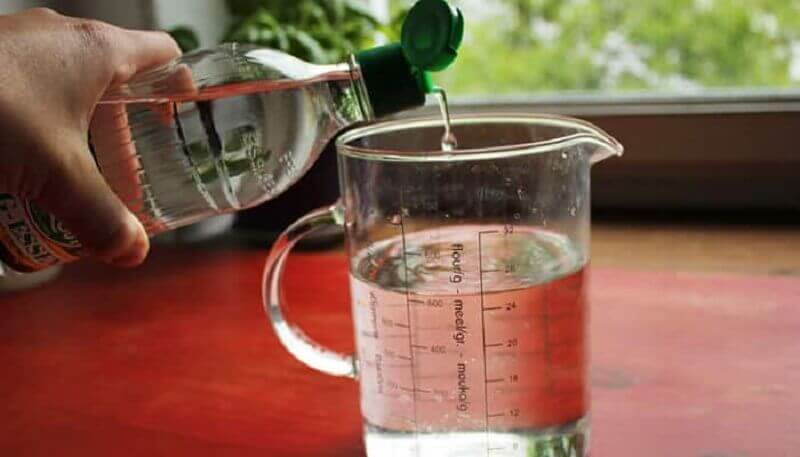How to Remove Mold from Your House

Removing mold from your house is more than an aesthetic issue.
While these spots can make your walls look unattractive, the real importance lies in the health impacts. In this article, we’ll tell you how to remove mold effectively.
It’s true that mold is slowly deteriorating your paint and other materials in the home. However, the real problem is that it’s a source of fungi and bacteria that can affect your body.
Although you might just be annoyed at first by the damp smell it gives off, mold becomes more and more responsible for allergies and other respiratory issues. For that reason, you must take measures to fight it before it continues to proliferate, to ensure the welfare of everyone in your home.
In today’s article we want to share some recommendations and natural products with you that will facilitate the removal of mold without using chemicals. Are you ready to try them at home? Pay attention!
Tips to remove mold from your house
Before you try any commercial products for eliminating mold, you should find out how to best control its growth.
There are some simple measures that will help you avoid excessive humidity inside the house, which limits the places that these microorganisms can develop.
Read also: Household tips to eliminate mold
Ensure your home is well-ventilated

When air circulates it allows damp areas to dry naturally. This will alter the environment in which the fungi and microorganisms need to grow. It also explains why a little ventilation will help neutralize unpleasant smells that often get trapped indoors.
Don’t cover the mold
One of the biggest mistakes people make when trying to hide the presence of mold in their homes is to cover any stains with furniture, fabric, or something similar. This prevents the air from circulating around the affected areas, which allows the mold to grow even more. It’s best to keep the area open and prevent the problem from getting worse.
Avoid hanging wet clothes inside the home

Natural products to fight mold in the home
Many natural products have properties that will disinfect and clean surfaces to allow you to remove mold more easily. These are 100% environmentally friendly options that will leave your home smelling fresh while neutralizing odors and moisture stains. Learn about the best options here.
White vinegar

How should you use it?
- Spray this product on your walls, bathroom, or tiles where there is mold and leave it on for 15 minutes.
- After this time, wipe off any residue with plenty of water and a brush.
Baking soda
Baking soda is a versatile product with many uses in the home. It has antifungal, deodorizing, and antibacterial properties, and is suitable for lots of cleaning tasks. It stands out for its ability to stop the growth of mold. Using baking soda will eliminate dark spots and strong smells.
How should you use it?
- Moisten a generous amount of baking soda and rub it with a brush on the desired area.
- Leave it on for 20 minutes before rinsing.
See also: 7 toxic items in your home
Sea salt
Sea salt has a particular quality that makes it an excellent solution for mold. This mineral disinfects surfaces while also absorbing moisture in closed spaces. It’s generally used directly in the problem area. Some people also choose to use it to prevent mold from growing in the first place.
How should you use it?
- Rub plenty of sea salt on the affected surfaces, and remove it using a sponge or brush. Leave it on for 20 minutes.
- You can also add abundant sea salt to small containers. Place them in strategic locations, such as corners or inside cabinets.
Sometimes it can be very difficult to remove mold. This usually happens because the design of the home or materials allow moisture to seep through. If the problem persists for a long time, it’s best to talk with an expert to find a solution.
All cited sources were thoroughly reviewed by our team to ensure their quality, reliability, currency, and validity. The bibliography of this article was considered reliable and of academic or scientific accuracy.
- Pasini, C., D’Aquila, F., Curir, P., & Gullino, M. L. (1997). Effectiveness of antifungal compounds againts rose powdery mildew (Sphaerotheca pannosa var. rosae) in glasshouses. Crop Protection. https://doi.org/10.1016/S0261-2194(96)00095-6
- Moro, A. (2011). Las increíbles propiedades del bicarbonato de sodio.
- Mas, A., Troncoso, A. M., García-Parrilla, M. C., & Torija, M. J. (2015). Vinegar. In Encyclopedia of Food and Health. https://doi.org/10.1016/B978-0-12-384947-2.00726-1
This text is provided for informational purposes only and does not replace consultation with a professional. If in doubt, consult your specialist.








